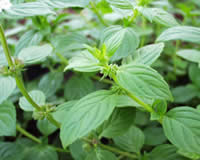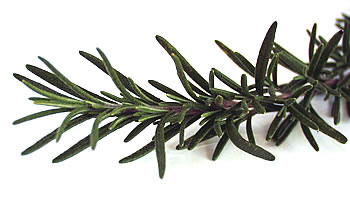Savoring Sage
Sage makes its annual appearance in the kitchen as  Thanksgiving arrives. Classic stuffing (or dressing ) draws upon this herb for wonderful flavor and aroma. Sage is so much more than the dried herb that we use on Turkey Day. It is an aromatic easy-to-grow shrub that is valued for decoration, culinary uses, and medicinal applications.
Thanksgiving arrives. Classic stuffing (or dressing ) draws upon this herb for wonderful flavor and aroma. Sage is so much more than the dried herb that we use on Turkey Day. It is an aromatic easy-to-grow shrub that is valued for decoration, culinary uses, and medicinal applications.
History of Sage
Sage, native to the Mediterranean shores, was first used in antiquity to preserve meat. Medicinal applications became widely used and sage was believed to promote longevity and enhance memory, giving way to the idea of the "wise old sage." The Roman scientific and historical writer Pliny the Elder prescribed it for such ailments as snakebite and menstrual irregularities. And so the genus name, Salvia, is derived from the Latin verb salvo, salvare meaning "be well."
Arab physicians joined the sage fan club in the 10 th century, promoting sage as a giver of immortality. Europeans were exposed to sage through the Crusades and quickly added it to their gardens. Charlemagne insisted that sage be grown in his gardens in Germany , the French named it toute bonne , meaning "all’s well", and Chinese traders exchanged three to four pounds of tea for one pound of sage. American herbalists used sage to treat many ailments such as epilepsy and seasickness.
 How to Grow Sage
How to Grow Sage
Salvia officinalis, the most common sage used in the kitchen, is a perennial starting in zone 4. Sage is best grown from new plants or cuttings. When grown from seed, the plant will take at least two years to become established. Plants can be found at nurseries spring through early fall. Sage likes sun and well-drained soil. Space multiple plants two feet apart. Each spring, fertilize the plant and cut it back to encourage new bushy growth. Sage tends to become gangly otherwise. Pick leaves in midsummer and trim the plant again after it blooms. Although it is a perennial, sage is commonly replaced after five years for optimum growth.
There are many other varieties of sage that can easily be grown as well. Try Salvia elegans , pineapple sage or honeydew sage, enjoyed mainly for their beautiful red blooms that attract butterflies and hummingbirds. Tricolor, golden, and purple sages are eye-catching additions to the herb garden, though their flavors are not as strong as the traditional silver-green common sage. Of course there are many other sages that grow wild, especially in the western United States , and while they have little culinary purpose, can be fashioned into aromatic wreaths and brooms.
 Uses of Sage
Uses of Sage
Sage, especially non-traditional varieties, is best used fresh. Pick leaves and store them in a container or plastic bag in the crisper of the refrigerator for up to two weeks. Or freeze them for up to two months. To dry for winter use, hang sprigs in a warm, dry place until leaves are completely dry. Rub leaves between your hands to crumble. Store in an airtight container. Visit McCormick’s site for recipes using sage.
Used medicinally, sage oil is known to reduce perspirations, explaining its use in treating fever with sweats. Sage also has antiseptic properties that aid in treating canker sores and sore throats. It can also be used to aid digestion, stimulate menstruation, and relax sore muscles.
For more recipes and instructions for cosmetic uses, visit herbnet.com and willowpondherbs.com





